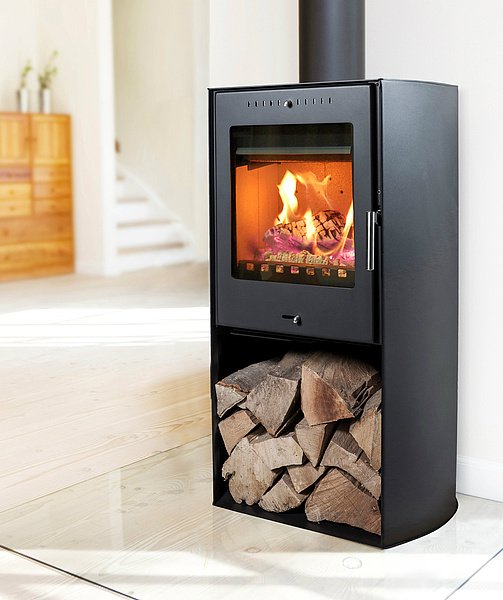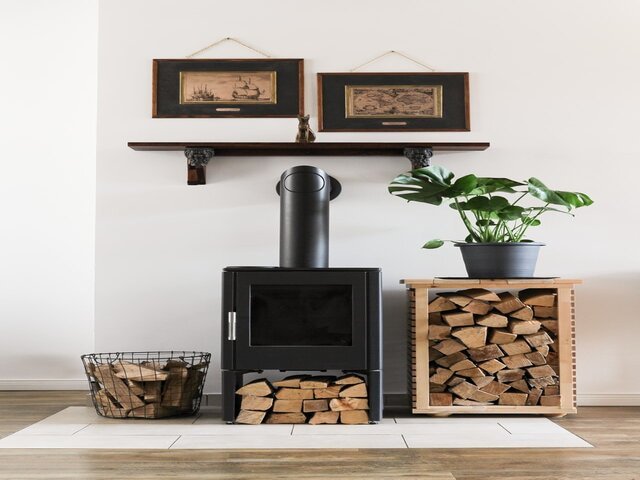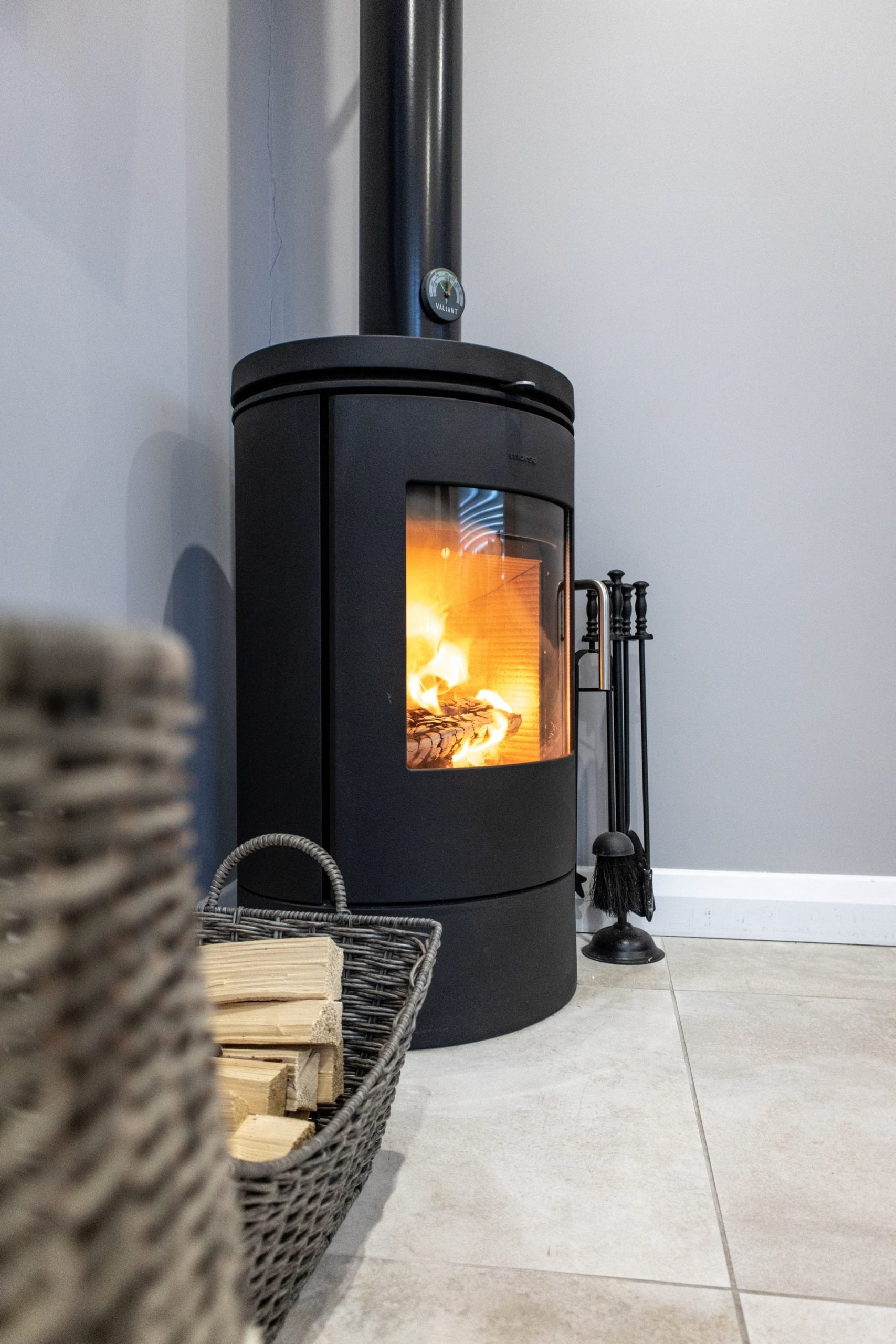How to Choose the Perfect Wood Fireplace to Complete Your Home
Homeowners looking to improve their household may want to think about getting a fireplace installation to serve as the focal point of their living room or any space that requires warmth. There are plenty of options for you to choose from, including wood, stone, or marble fireplaces.
If you want to ensure the fireplace you purchase goes well with your home’s interior design, then you are better off choosing a solid wood fireplace, as it comes in an array of colours and finishes. Depending on your preference, taste, and needs, having a wood fireplace to come home to at the end of the day to keep you warm and snug serves as an ideal ending like no other.
Rooms that seem to lack a certain edge to complete them could benefit from a fireplace because they can attract anyone’s attention despite the furnishings around your fireplace. Besides, they have the power to create more value and depth for your lovely home.
Before you begin having a fireplace installed, keep reading below to find out what it takes to select the right one for your house.
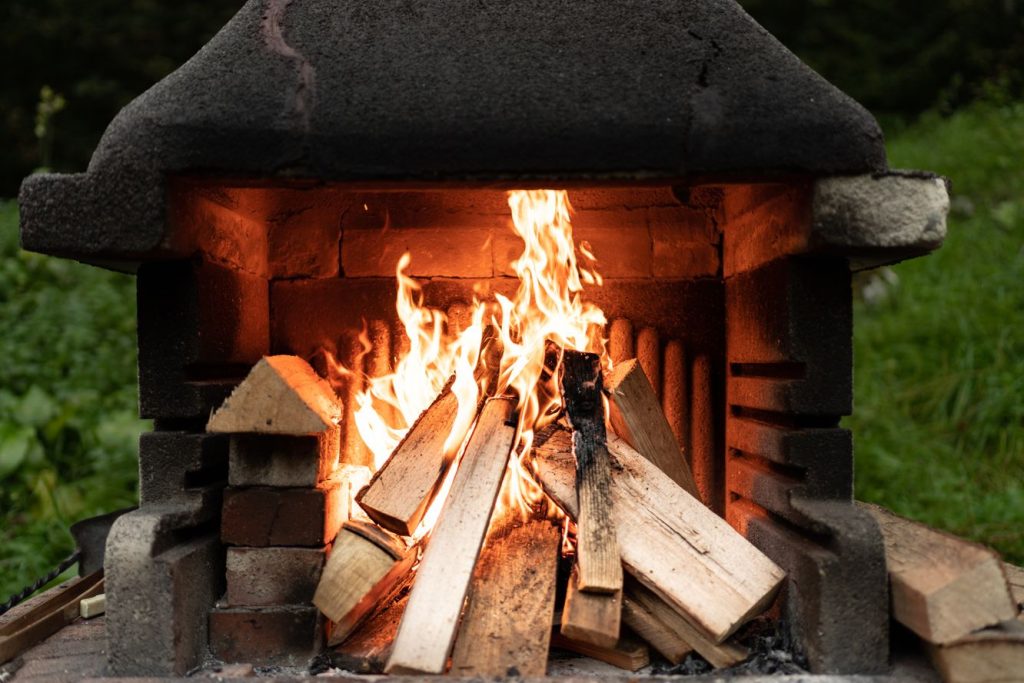
Select the Correct Colour
You must first take the time to select a colour that will go well with your home’s interior. If your living room or your chosen room for your fireplace installation is quite small, you may want to get a fireplace in a lighter shade to make the space more prominent. Lighter wood fireplaces appear more modern and go well with contemporary houses, whereas darker wood fireplaces suit period properties and larger homes.
If you’re planning to perform a remodelling project anytime soon, it will be best to accomplish that first before moving on to your fireplace. The important thing is to pick a colour for your fireplace that will go well with an array of shades instead of depending on your existing decor alone.
Determine the Type of Wood
You already know that fireplaces come in different makes and kinds of wood. What you decide to get for your home comes down to what looks good on your home.
If you want something popular, you could go for oak since it’s widely known for its appeal, durability, and flexibility. Moreover, other materials offer endless finishes and shades, highlighting different colours of beige and brown. If you want something unique, you can get a fireplace that uses a combination of multiple kinds of wood to make the result more luxurious and classy.
Decide on the Back Panels
Other than focusing on your fireplace itself, you will also have to give attention to its back panels or the background to complete your stove fitting. Based on the kind of fireplace you want to get, you have the opportunity to pick out various colours, materials, and finishes accordingly.
A fireplace’s panels must not only suit the solid wood around it but also the entire room itself, so the design you opt for should match your home’s colour scheme and overall style. If you need help figuring out your options, you could hire fireplace installers to provide you with reliable advice.
Conclusion
Wood fireplaces are a significant investment worth making for your home because they can bring you and your family the warmth you need to last through the cold seasons. Besides picking out the colour, type of wood, and back panels you want to use, you should also ensure that the fireplace you have installed is durable and something you can rely on for the years to come.
Are you looking to hire stove installers in the UK for your home fireplace? Stove Scotland provides multi-fuel and wood-burning stoves to suit any household in need. We cater to some of the best brands in the market, including Merlin, Aduro, Termatec, Burley, and more. Get in touch with us today to receive a free quote!
Everything You Need to Know About Wood Burning Stoves
Wood burning stoves are a great addition to your home. They bring character and add warmth and cosiness to any room. They are also very energy efficient, so buying one can even help reduce your energy bills!
As wood burning stoves become a popular choice for many homeowners, you may be considering getting one for yourself. If you’re a new enthusiast about to buy your first stove, or if you’ve just bought one and you’re looking for a general guide, read on.
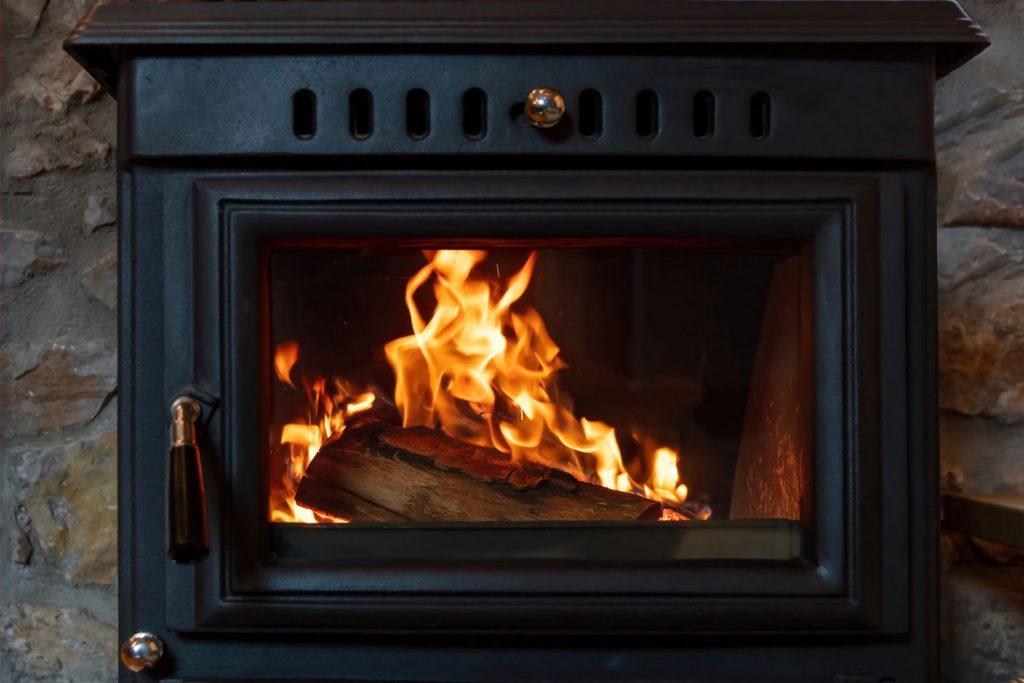
How Does A Wood Burning Stove Work?
Aside from being a fantastic aesthetic addition, a wood burning stove is a practical and efficient choice when you want to warm up a room. To light a wood burning stove, you need to have the following:
Kindling – You need firelighters, small pieces of paper, and wood kindling to start a fire.
Wood – You can use any type of wood to burn inside your stove, but seasoned wood is the most efficient. Seasoned hawthorn and horse chestnut have been cut and dried for a year, so they provide a good flame and very strong heat.
Just follow these simple steps:
1. Preparation – Check the indicator on the stove to ensure that you have an adequate air supply. Use a log guard to keep all the fuel inside.
2. Kindling – Place your firelighters or kindling on the fire bed. You need a healthy amount of kindling to create a fire. Leave the stove door open at the beginning to help the kindling catch fire.
3. Feed the fire – Once the kindling catches fire, allow the fire to burn for a bit before adding small pieces of wood. Use bigger and bigger log pieces gradually, so you don’t smother the fire as it grows.
4. Airflow – Once you’re happy with the fire, you can slow down the airflow. This ensures that the wood doesn’t burn too fast.
Can Any Property Install A Wood Burning Stove?
Wood burning stoves give off a lot of heat, smoke, and gas. You need a way to vent all of that out of your house, meaning you need a chimney. If you don’t have a chimney in your home or you don’t want to go through the hassle of getting one installed, your installation company can help you come up with alternative systems and solutions.
You don’t need any special permits or planning permission to install a wood burning stove.
Cleaning A Wood Burning Stove
Keeping your wood burning stove clean extends its life and ensures that it functions as efficiently as possible. If you’re using your stove several times a week, you should clean it every two weeks or every month. Simple cleaning steps include:
1. Make sure the stove is completely cool before opening the interior. Use newspaper or an old drop cloth to protect the floor around the stove.
2. You need a metal spade and a metal container for the ashes. Carefully transfer the ash from the stove to the container. Try to avoid spillage and aim away from the ash if you need to sneeze. Once you clear away the ash, store the container outdoors and away from any flammable objects.
3. Use a dry cloth, soft brush, or a standard vacuum cleaner to clean the stove exterior. Don’t use any water for cleaning as this may cause rust.
Conclusion
If you’ve always wanted to relax and be cosy in front of a fire, a wood burning stove is a fantastic choice for you. It can efficiently warm your home, and it’s aesthetically pleasing, too. It’s an efficient way to keep you and your family cosy during winter—you can even lower your energy bills!
Are you looking to purchase a wood stove in Scotland? Stove Scotland is a family-run business with a burning passion for stoves. We have access to every stove and flue system available. We provide a wide range of supply and installation packages to meet your needs and your budget. Contact us for a free, friendly, no-obligation quote and get the perfect stove for you and your family!
The Basics of Wood-Burning Stove Maintenance: A Guide
Wood-burning stoves are a welcome necessity in most households because it provides reliable heating while enhancing the interior’s aesthetics, whether you have a rustic or modern space. However, you have to be responsible for its maintenance once stove installation is completed, or you miss out on optimal utilisation of this unit, primarily during the colder months. To orient yourself on the basics, refer to the following tips for your convenience:
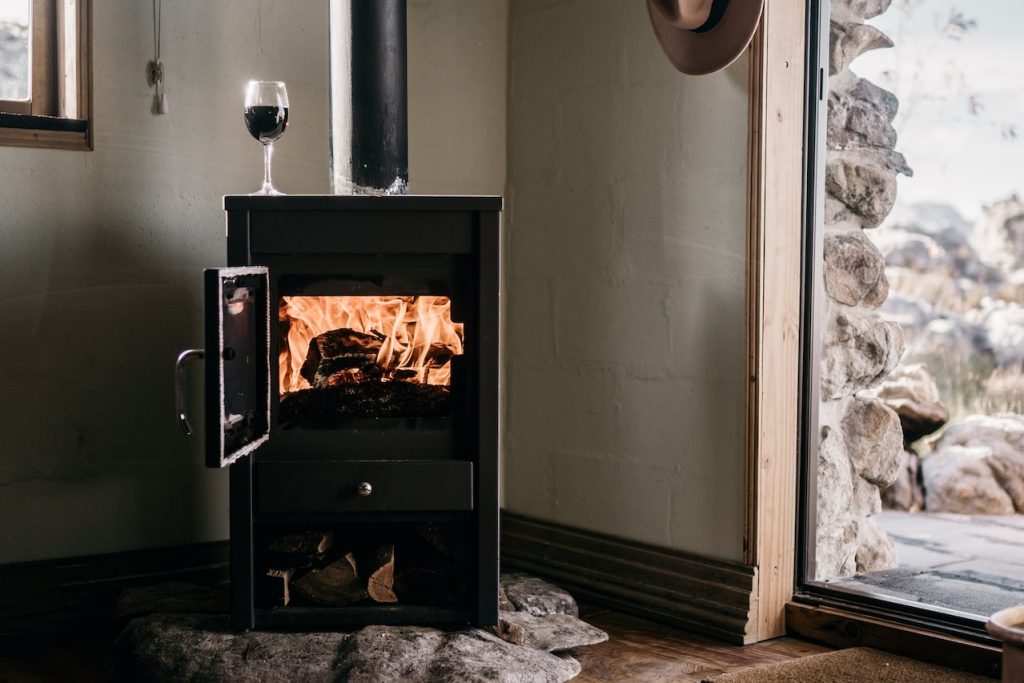
The Basic Things You Need to Know About Wood Burning Stoves
1. Inspect for rust and bumps
While most stove installers say modern-day wood-burning units are less susceptible to rust and bumps, it is still worth checking from time to time, especially if you have been using it for five years or more.
You may also expect these issues if your stove is burning more fuel than usual due to a higher heat setting. Whatever the cause, just rub the rusty areas and reapply stove paint to ensure it looks brand new. For bumps, contact your stove supplier for professional assistance.
2. Keep your chimney clean
Of course, every stove user like you knows that many wood-consuming stoves need a chimney to remove smoke, ash, and other debris. Thus, you should have a chimney sweeper work on your space either twice a year or more, depending on the frequency of usage.
If you don’t do this, you allow the creosote to build up throughout your stove system, risking chimney fires and endangering your household. To avoid this, always remind yourself to have your chimney cleaned.
3. Dump out the ashpan’s contents
Your wood-burning stove can have a significant amount of ash after each heating cycle, causing your ash pan to be full. If hot ashes are not removed, they make their way into the grate’s lower side, affecting the shape and the stove’s functionality. Because of this, you should always check the ashpan and dispose of any hot ashes immediately.
4. Wash the glass
If you happen to get a modern unit for your stove installation, chances are it has an air washing mechanism to maintain the glass’s cleanliness. However, some units don’t have this function, meaning you have to wash them daily with a specially formulated cleaning solution designed for stoves like yours.
Alternatively, you can make use of malt vinegar and newspaper. All you have to do is dip the paper in the vinegar to wipe the glass. Just ensure you have your stove installer’s approval for this to ensure this cleaning method is ideal for your stove.
5. Check the rope seals for damage
Typically, a wood-burning stove should have a fire rope around the door, which acts as a heat-resistant seal to prevent air from getting out in the unit’s chamber. This way, you can have reliable access to heating. The problem is most ropes become squashed and worn-out due to natural wear and tear. Fortunately, you can inspect this easily every month by using a strip of paper. Simply trap it by using the door and trying to pull it out. If you can do so easily, you should replace the rope as soon as possible.
Conclusion
Wood-burning stoves are a valuable resource for your home, but you have to pay attention to proper care. It ensures your safety and convenient use. Fortunately, you now have a better understanding of the basics of wood-burning stove maintenance to reduce major repairs costs and ensure optimal use. Just ensure you get your stove fitted by professional stove installers and inspected when necessary.
Are you in need of wood-burning stove services, such as installation, supply, and maintenance? Contact our team at Stove Scotland. Our team connects you with top stove brands, such as Merlin, Aduro, and Pod, enabling you to get the most out of your unit. We can even fit your stove in your space without needing a chimney! Get a quote today!
The Basic Things You Need to Know About Wood Burning Stoves
A wood-burning stove is an excellent alternative if you wish to reduce your heating bills at home. It is perfect if you want an efficient stove that provides three times more heat than regular heaters do. Although that sounds convincing, most people still feel hesitant about buying wood-burning stoves. One of the main reasons is what they don’t know about the product.
If you wish to buy wood-burning stoves for your home yet feel like you still need to know a lot about it, this article is for you. Here are the basic things you need to know about wood-burning stoves before you decide to get them.

Reasons for Installing a Wood Burning Stove in Your Property
Besides the advantages mentioned above, here are more reasons you should consider having a wood-burning stove installed in your home:
- It is a visually appealing addition to your property that could increase its value.
- It can be installed anywhere in your home, making it the best option if you want to heat a specific area.
- It gives off quality heating faster and more efficiently.
- It is an eco-friendly alternative because it uses natural fuel.
- You can stay warm even if there are power outages in your area.
Connecting Your Wood-Burning Stove to Central Heating
Making your wood-burning stove the centralised heating source in your home is possible. However, you need the help of a well-trained and experienced professional to do it for you. To give you an idea, here are the three ways you can do it:
Option 1: Through Plumbing Your Stove
This option is the most common way households connect their wood-burning stove to their hot water system. In this method, your stove becomes your system's radiator. For homes with an existing gas boiler, you can turn your boiler off any time and use your wood-burning stove as your central heater instead.
Option 2: Submerging Multi Coil
This method requires you to submerge multiple coils in a tank heated by your wood stove. The system works by acting as the heat exchanger in your household.
However, this connection requires specific placements. The whole system is powered by pressure from gravity. You need to install the tank higher than the wood-burning stove. Therefore, if your stove is on the ground floor, ideally, your system should be on the upper floor to make it efficient.
Option 3: Heat Accumulator Method
This method allows you to connect different equipment to your heat source, which is perfect if you need to have multiple heat sources at home. Using this method, you can link your other heating systems, such as your boiler stove, gas boiler, and solar panels. Through this method, controlling the underfloor heating using your wood-burning stove is also possible.
On Permit Requirements
You need to check with local authorities if they still require planning permission should you push through with your wood-burning stove installation. This is a necessary step for everyone's safety at home. As time progressed and technology advanced, protection measures were also updated over time.
In some areas, planning permission is no longer required, but make sure to check and comply with the legal requirements in your area. Different rules are employed, even in things as simple as altering or replacing your flue or chimney. In some cases, hiring someone registered under the HETAS competent persons scheme means that you no longer have to seek permission from local authorities.
Conclusion
The installation of a wood-burning stove might be intimidating at first, but buying the right stove and seeking help from the right people can make the experience more manageable. It would also help if you ask your manufacturer, supplier, and installer about the product to assuage any concerns.
Should you need a wood stove in Scotland, we are here to help. Stove Scotland aims to provide our clients with professional, honest and reliable service at affordable prices. We supply, install, and maintain wood-burning stoves. Please contact us for a free no-obligation quote.
Things to Consider When Replacing Your Wood Burning Stove
Having a wood burning stove is a great way to keep you warm, especially during colder days. However, if you have a unit that doesn’t perform as well as it used to, then you can’t get much use for it. You may even have to spend more on fuel and endanger your household because fumes can easily be misdirected. Fortunately, you can look into replacing the entire unit. You just need to check if this is the course of action you should consider. For further guidance on that, use this article as your reference.
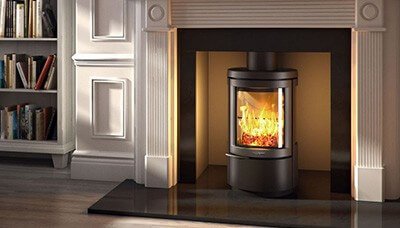
What Is the Typical Lifespan of a Wood Burning Stove?
The general lifespan of wood burning stoves is 10-20 years. Still, some stoves can surpass 40 years if all the necessary maintenance checks, worn-out components replacements, and other means to preserve usability are consistent.
Even if these stoves can last for a long time, many users and stove installers ask if it’s worth keeping them due to the inefficiency, overconsumption of timber to yield favourable heating, and the like. You may even be better off getting a multi-fuel stove to supplement heat with other sources. But if you want to find the perfect replacement, you can look into the newer models for wood burning stoves to meet your necessities and lifestyle.
Why Should I Get New Stoves Instead of the Old Reliable Models I Know?
As a wood stove owner, you may have your convictions set on the current amount of investments and sentimental value of your current unit. Although it may be meaningful for you to keep it going, you may expect some environmental issue. In fact, most stoves produced ten or more years ago can release more than 80 per cent emissions than the latest stove manufactured. Newer stoves are also 90 per cent more efficient, meaning you can save more time and money on general use.
What Are the Possible Signs That Signify I Need to Replace My Current Stove?
Refer to the following signs and their respective descriptions to see if you need to replace your current wood burning stove with a newer model:
- Warping around the stove’s main form: While most cast iron and stainless steel stoves can withstand intense heat, over time, the main form tends to have bumps and indents. These imperfections are telltale signs of overfiring, meaning the steel or iron used to build your unit can no longer process the fire and wood properly. As a result, the stove warps.
- Rusts and cracks: Your stove can have rusting and cracks due to improper condensation from inside the unit, even if there’s a high presence of heat. You can also expect rainwater, humidity, and poor cleaning to be factored into this issue.
- Too much smoke and dirt: You can expect your stove to release smoke, dirt, and ash as fire burns, but if it’s more than usual, then there’s a problem. However, before opting for replacement, you may also want to consider repairs, especially if your stove is still around 5-10 years old. Consult with a specialist for further information.
Conclusion
Wood burning stoves can last for a long time, but you have to maintain and check them if they need to be replaced. You may also consider repairs if it’s a feasible option. To make the best decision for your needs and preferences, note all the previously mentioned information and consult with professional stove installers like our team for further assistance.
Are you looking for high-quality wood burning stoves in Scotland and the UK to replace your current ones? We at Stove Scotland can provide you with that and other models for your convenience. We can also install your new unit to ensure you have efficient heating for your space. Claim a free quote today to have a better understanding of what you need.
Multi Fuel Stoves: What Is the Best Fuel I Should Use?
Multi fuel stoves allow you to burn several different fuels. This feature is perfect if you live in a location where firewood is inaccessible or want to switch from burning one type of fuel to another. They also won’t readily produce carbon monoxide when you’re not using wood. Most models are also highly efficient, easy to use, aesthetically pleasing, and long-lasting. However, there are some things to remember so that you can maximise their use. To make the most of them and learn about the best fuel to burn using them, use this article as your guide.
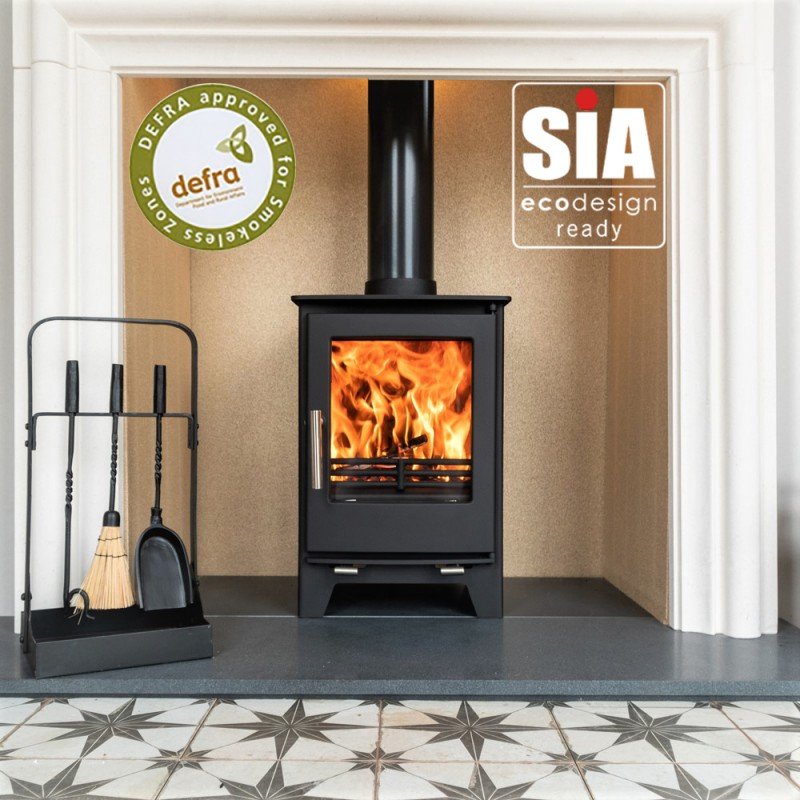
What Is the Best Fuel for My Multi Fuel Stove?
Multi fuel stoves can burn coal, smokeless fuel, and wood. Burning the best fuel for your stove is important. Note that burning both wood and coal on your stove at the same time is not advisable because it can damage your flue lining. Your stove system can erode when the sulphuric acid in coal and the high moisture levels in the wood combine.
If you want to burn coals, place them on the vented grate of your multi fuel burner. This feature will let the fire take in the air from below. Burning them or smokeless fuels is important if you live in a smoke control area. On the other hand, if you want to burn wood, use a solid base and let the logs sit on a bed of ash to take the air from above. Look for a stove with a wood-burning kit, regular log burner, or removable grate if you opt to stick to burning logs.
What Is the Best Smokeless Fuel for My Multi Fuel Stove?
If you’re wondering which smokeless fuel is best to use for your multi fuel stove, you should try anthracite or hard coal. It is characterised by high carbon content and several impurities, and it produces less dirt, creosote, pollutants, and smoke when burnt, making it clean-burning and efficient. Thus, it can be used in smoke control zones and reduces the risk of chimney fires and blockages. It is also more compact and much harder than regular house coal.
Anthracite may seem more expensive than house coal since it is less readily available, but it burns at a hotter temperature. Therefore, using it is better in the long run because you won’t need to use it as much. It can last longer than normal coal, allowing you to get more value for your money.
How Do I Burn Anthracite in My Multi Fuel Stove?
Compared to normal coal, anthracite is a little more challenging to light. It is so much denser, which means it needs a higher temperature to burn. To start, use a clean grate and dry hardwood that can produce high levels of heat. Once hot, begin adding small pieces of anthracite.
Conclusion
Using your multi fuel stove is an efficient way to keep yourself warm and attain your desired indoor temperature. To enjoy its benefits to the fullest, remember the information in this guide. Make sure also to invest in a high-quality stove and choose a trusted brand and supplier like us.
If you’re searching for the best-quality multi fuel stoves in Scotland, reach out to Stove Scotland. We specialise in the supply, installation, and maintenance of multi fuel stoves and supply top brands, like Merlin, Pod, Burley, and more. Contact us to request a quote!
Reasons for Chimney Smoke Spills and How to Prevent Them
A fireplace will make for a cozy bonding experience between you and your loved ones, especially during the cold months. However, this intimate shared experience may take a turn for the worse if your fireplace spills out smoke. This is not pleasant for anyone, least of all the homeowner. Fortunately, there are measures that can be taken to ensure that this never happens.
Smoke spills can happen in fireplaces or wood stoves that are not properly vented and maintained. To make sure that your fireplace or wood stove never leaks smoke, this article will shed some light as to the possible reasons why smoke spills happen and how they can be prevented.
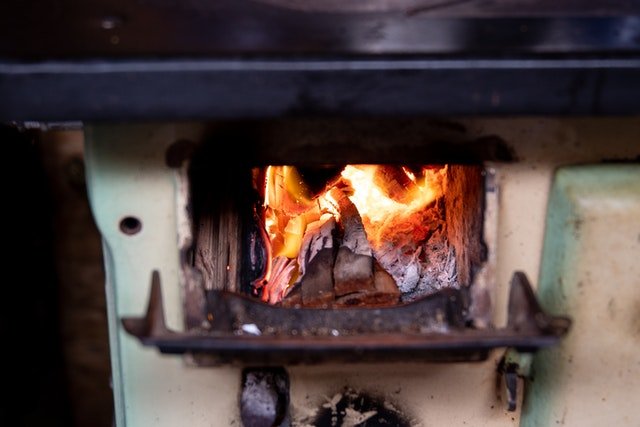
Reasons for Chimney Smoke Spills and How to Prevent Them
1 - An Obstructed Flue
There are many causes for an obstruction to form in the flue of your fireplace. You may either have a deteriorating chimney, debris from a bird’s nest, or something else standing in the way of the smoke successfully escaping through the chimney as it should.
How to Prevent This: To prevent an obstructed flue, regular maintenance of your chimney is needed. To determine if you have this problem, light a sheet of newspaper on fire and look to see if the smoke will come back down.
2 - Downdraft Pushing Smoke into the Home
This is quite self-explanatory. Wind or some other downward draft will cause the smoke to come back down the chimney and into the house.
How to Prevent This: The main reason why the smoke is not exiting your chimney as it normally should be identified first. Possible reasons may be that your chimney is too short, the negative pressure in your home, or that there are too many bends in the flue. Contacting an expert in chimney or fireplace installation will help you narrow down the possible cause.
3 - Using Wet or Unseasoned Firewood
Wet or unseasoned wood may let off steam or smoke if it is lit on fire to burn in a fireplace. The telltale sign to look out for is that the ends of the wood are cracked. Keep a watchful eye out for this when you choose wood to put into your fireplace or stove.
How to Prevent This: Make sure that you only purchase firewood from a reputable source. On top of choosing only the highest quality of wood, you should ensure that the wood is dry before lighting a fire using it. If you know the wood still has moisture in it, give it ample time to dry in the sun before using it for a fire.
4 - A Faulty Fireplace or Stove
There may be components of your fireplace or stove that have become under par because of lack of proper maintenance. If you own an older house try to recall when the last time was when you had your fireplace looked at and maintained by a professional.
How to Prevent This: Make sure to have your fireplace or wood-burning stove checked at least once a year before the winter months roll in.
Conclusion
If you notice that your fireplace or wood-burning stove is susceptible to leaking smoke, it is a good idea to have these issues fixed before the cold sets in. Performing regular maintenance on your fireplace, chimney, and wood stove will also be invaluable, particularly before the cold winter months arrive.
However, if you are in the process of building a new home or renovating your current home to include a fireplace or wood-burning stove, the best prevention method is to ensure that all the components and parts work as they should.
Should you have the need for fireplace or stove installation, contact Multi-Fuel & Wood Burning Stoves in West Lothian! We are market experts with a comprehensive knowledge of stoves and fires, we will work with you to ensure that your stove will perfectly fit the style and dimensions of your room. We supply top brands such as Merlin, Aduro, Pod, Askgard, Termatec, and Burley and are confident that we can find the perfect match for you. Don’t have a Chimney? That’s not a problem – we can fit your stove anywhere! Call us today and get your home a brand new fireplace!
How Safe is It to Leave Ash in a Wood Burning Stove?
If you are looking for an efficient way to warm a place up, wood stoves are a great choice. They can radiate heat in all directions in a quick manner. Moreover, the use of oil and LPG can be expensive, so burning wood provides you with the benefit of reduced heating bills. However, choosing wood-burning stoves would only be advantageous if you know the right way to use and maintain them properly.
A critical task in the ownership and maintenance of a wood-burning stove is regular cleaning, which includes removing layers of ash from time to time. If this all sounds new to you, we will tell you everything you need to know about the wood-burning stove and the ashes it requires to function well.

How Much Ash Does a Wood-Burning Stove Need?
You might have heard people recommending you clean out your wood-burning stove entirely before you start a new burn. However, most wood-burning stove suppliers suggest otherwise. They advise you to leave a specific depth of ash—around 25mm or one inch should be enough—into your stove before starting another fire.
The remaining ashes help the wood burn faster. The ashes have properties that allow them to enclose the fire's warmth and reflect it into the wood, resulting in a faster burning process. The ashes also act as the stove's secondary combustion chamber. Even if the fire subsides, it can still trap heat for many hours. At the same time, the burning process would be much cleaner. Your wood would be used efficiently, and the air within the stove door would stay clean.
Moreover, if you keep cleaning your wood-burning stove, your stove may get permanent damage to its metal base, resulting in a warped or cracked bottom. Keeping enough layers of ash would prolong its life.
You have to keep in mind, though, that a thick layer of ashes is not recommended. If there is too much ash in your stove, it can block the airflow from the vents. The ashes might also take up space that is supposedly for the wood.
The Ideal Timing for Removing Ash
Indeed, a layer of ash is needed to keep your stove running efficiently. Nonetheless, it does not mean that you should keep the old ashes and never get rid of them. Since the burning of wood would eventually lead to more ash, you might get an unwanted buildup. It would be best if you let go of the overused ones and make room for newer ash.
The frequency would depend on how often you use your wood-burning stove. The more you use it, the more ashes you would collect. Make sure you follow the recommended depth of ash needed and stay consistent with it.
Important note: ashes have many uses. Before fully letting them go, you can also use them as fertiliser for your garden. They contain calcium, potassium, magnesium, and phosphorus that promotes growth in plants.
Conclusion
Keeping a layer of ash in your wood-burning stove can be beneficial for your equipment and household. Aside from helping with insulation and easier wood-burning, it also keeps your investment protected from damage. If you have a wood stove at home or decide to get one now, keep this advice in mind to prolong your wood-burning stove's life.
Should you decide to purchase a wood stove in Scotland, make sure to only get from a reliable supplier. Stove Scotland can supply, install, and maintain wood-burning stoves. Contact us today to learn about your options.
4 Key Factors to Consider When Looking for a Wood Stove
There's no denying the importance of a wood stove for your home. This heating appliance is designed to warm your space by burning timber as its fuel. When you light the wood in your stove, fire is produced, and it heats up the air in your room to make you comfortable.
There are various models of wood-burning stoves readily available in today’s market, and they come in different shapes, sizes, materials, colours, and designs. Because of this, it can be a bit confusing to find the right appliance best suited for your home and family.

Fret not, as we've rounded up five key factors that you must consider when looking for a wood stove for your home:
1. Stove type
Before you begin your search, you must first look at the two primary types of stove to see what option to choose. Take note of the following:
- Wood-burning: This heating unit is a stove that burns only wood and no other fuels. For this stove, you may use wood materials like logs, pellets, or chips. You also have the option to choose between a log burner and a pellet stove.
- Multi-fuel stove: This heating unit is known as a mineral-fuel stove because it doesn't only rely on pieces of wood for fuel. Because of this, it can burn coals and smokeless fuels to warm your home space.
If you're choosing between the two, it all boils down to your family's needs, home type, and the fuel available in your area.
2. Installation
After choosing the type of stove you want, you must determine how you want to install it in your home. Here are two installation options you can go for:
- Freestanding: This heating unit can stand alone. All it takes is for you to purchase a model and position it somewhere in your house as needed.
- Insert: This heating unit is similar to the freestanding stove, but the difference lies in how this stove insert is required to be located within your existing fireplace.
Here at Stove Scotland, we provide stove supply and perform stove installation and maintenance services. We also offer supply and installation packages to meet your requirements and budget!
3. Materials
As far as the stove materials are concerned, you have the following popular options to choose from: steel or cast iron. Both materials are great conductors of heat, but they differ in the way they release heat. As such, be sure to consider the details below:
- Steel: This stove releases the heat more quickly into your room but doesn't retain the heat for so long.
- Cast iron: This stove takes longer to heat up, but the heat stays for a much longer time in your room.
4. Combustion
A wood-burning stove won't work properly without combustion. Combustion is simply the scientific term for burning, which occurs when a substance reacts with the air's oxygen. Here are two types of combustion you may want to consider in a wood stove:
- Catalytic: This wood stove with catalytic combustion usually has a more efficient and cleaner wood-burning than its counterpart. Yet, it is considered a high-end stove with an added level of complexity.
- Non-catalytic: This wood stove still provides a high efficiency and heat output through a secondary combustion process. Know that most of the wood stoves in the market are non-catalytic.
Conclusion
A wood-burning stove is indeed an excellent investment for your home. However, you will want to make sure that you're choosing the right appliance by considering its type, installation, materials, and combustion. With all these in mind, you'll be able to make the right stove selection and purchase decision!
We have a wide variety of top stove brands in store and provide installation and maintenance services with quality and customer satisfaction. If you're looking for a wood stove in Scotland, get in touch with us today for a free quote!
3 Tips to Enhance Safe and Efficient Use of Your Stove
While log burners have been a staple in many homes for warmth and cooking, the various concerns that have arisen from its use have made it seem like the government is on its toes to get it banned. Fortunately, this is not the case. They have introduced a program known as the "Clean Air Strategy" to help guarantee safe and efficient use of these log burners.
That said, you do not have to wait for the strategy to reach you to start using your log burner safely and efficiently. You can do many things to make a difference, and in this article, we will list some of the things you can do!
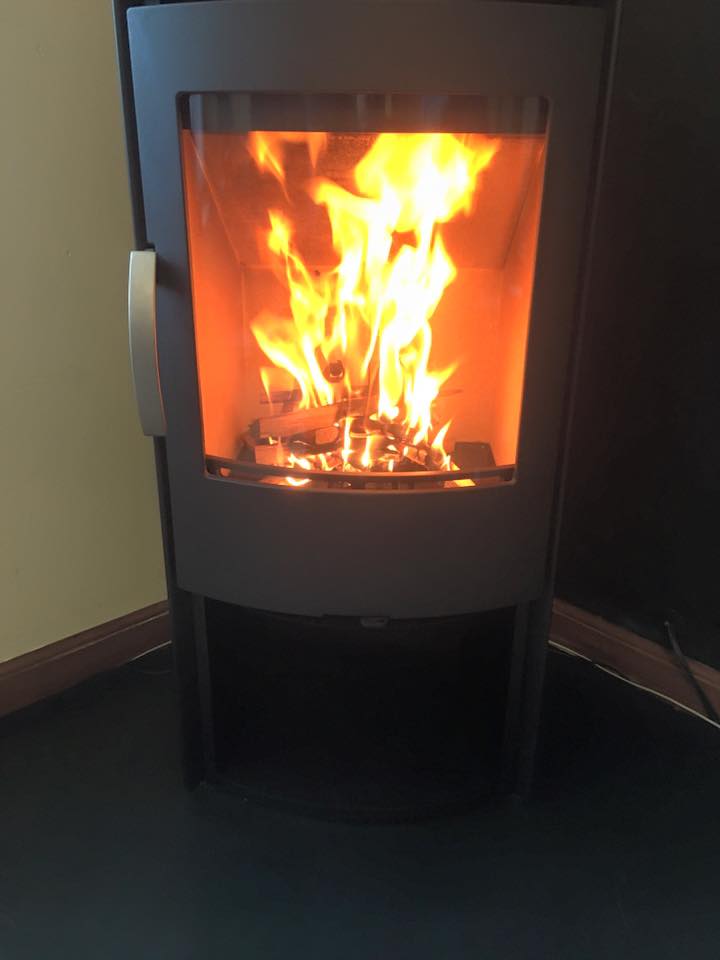
1. Don't let it smoke
When you burn wood, you create smoke. If you don’t tweak your settings, you might produce excess smoke. This excess smoke can lead to soot build-up in the chimney, causing emissions to seep into the house.
To avoid this problem, there are a few things you can do. For instance, you can use the air controls to ensure the burner gets enough oxygen to create more flames and less smoke. Also, keeping the fire constant will ensure that the flue maintains a specific temperature. This reduces the risk of deadly carbon monoxide seeping back into the home.
If you have the money, we recommend investing in DEFRA-approved stoves or eco-design ready stoves. They are at least 60% efficient, maximising your investment and reducing the risk of potential harm.
2. Only use dry wood
Certain types of fuel tend to produce much more smoke than others. For example, wet logs and house coal are known to create plenty of emissions. Dry logs and low-sulfur fuels produce much less smoke.
Be sure to pick fuel that guarantees much fewer emissions, such as dry wood. Note that dry wood may still contain some moisture, but anything less than 20% moisture content is a solid choice. These qualities ensure that the wood burns effectively and limit the amount of smoke and soot produced. If you have access to wood labelled with "ready to burn" logos on it, they already fall under the criteria. This means all you need to do is buy them and use them! If you want to use your wood, then you will need to season the wood. Store them in a dry place for at least a year or two before using them.
3. Avoid fuel with smoke
Other than wood, there are other types of fuel, such as coal. Unfortunately, not all coal is made equal, and some are much safer than others.
For the best coal, look for anthracite coals and other smokeless types. These coals come with a sulfur content of no more than 2% to ensure that smoke and sulphur levels are minimised. Unlike house coal, they do not produce as much ash either, necessitating less cleaning on your end.
Conclusion
By applying one or more of the above tips, you ensure the safe and efficient use of your log burners. With less dangerous emissions coming out of your stove and more heat being produced, you can sit back and relax even in the coldest winters knowing you are in the safety of your home without any dangers from the stove itself.
That said, if you are working with old stoves, we highly recommend investing in brand-new ones. Stoves today are much more efficient and safer than stoves of the past, so go ahead and pick one! They will help you save money in the long run and ensure that your home remains the haven it should be.
Stove Scotland are experts of stoves and fires, offering multi-fuel and log burning stoves in West Lothian. If you are looking to purchase the best wood stoves in Scotland, reach out to us today and get your free quote!





